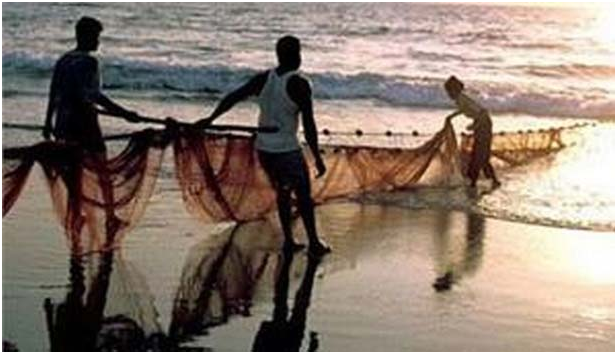Sri Lanka Releases Indian Fishermen on Eve of PM Modi's Visit
Fishermen, victims of South Asian tensions

NEW DELHI: Ahead of Indian Prime Minister Narendra Modi’s visit to Sri Lanka, Sri Lankan President Maithripala Sirisena's office has announced that it will release 86 Indian fishermen -- being held for allegedly poaching in Sri Lankan waters -- as a measure of goodwill.
The significance of the visit, scheduled for Friday, is evinced by the fact that PM Modi will be the first Indian Premier to visit the island nation in 25 years, since Rajiv Gandhi’s bilateral visit in 1987. "I am delighted with the opportunity to visit one of our most important neighbours...We will work together to forge a new partnership between our countries,” the Indian Prime Minister said ahead of his visit.
The visit and the announcement follow a controversy over Indian fishermen arrested by Sri Lanka, as Sri Lankan Prime Minister Ranil Wickremesinghe was quoted by a Tamil TV channel saying it was legitimate for the Sri Lankan navy to “shoot fishermen” if they trespass into Sri Lankan water. “Why are [they] coming into our waters? Why are [they] fishing in our waters...? Stay on the Indian side... There will be no issue...No one will shoot anyone else...You stay on the Indian side, Let our fishermen stay on the Sri Lankan side... Otherwise don’t make accusations of Human rights violation by the Navy,” the Sri Lankan PM said.
India reacted sharply to the statement, vowing to take it up during the talks between External Affairs Minister Sushma Swaraj and her counterpart Malngala Samaraweera held a few days ago.
The fishermen issue is a major bone of contention in India-Sri Lanka relations, with arrests made by both sides of the other county’s fishermen often triggering calls for diplomatic intervention. As a majority of Indian fishermen straying into Sri Lankan waters are from the Indian state of Tamil Nadu, the arrest of Indian fishermen by the Sri Lankan government has provoked a widespread reaction from Tamil Nadu politicians who have accused Sri Lanka of turning the narrow strip of sea between the two countries into an “open air prison.” In December 2013, relations between the two countries soured as the Sri Lankan navy arrested 140 Indian fishermen in a span of two days and India arrested 98 Sri Lankan fishermen in 13 days. Tamil Nadu Chief Minister Jayalalithaa, a vociferous critic of Sri Lanka and its human rights record, issued a letter to then Indian Prime Minister Manmohan Singh stating that India was being too soft on Sri Lanka on the fishermen issue. The Sri Lankan government retaliated accusing Jayalalithaa for keeping Sri Lankan fishermen “hostage” to further her own political agenda.
In fact, the release of fishermen has become symbolic of the diplomatic ties between the two countries, with former Sri Lankan President Mahinda Rajapaksa releasing Indian fishermen as a goodwill gesture to mark his visit to New Delhi for Prime Minister Modi’s swearing-in.
Sri Lankan estimates claim that an average of 1,056 Indian boats cross into Sri Lankan waters illegally, poaching at least 65 million kilograms of fish each year. The problem is compounded by the fact that Indian fishermen view parts of Sri Lanka’s waters as their traditional fishing areas. India recognised Sri Lanka’s claim to the island of kachchativu by two agreements in 1974 and 1976 when India and Sri Lanka demarcated the International Maritime Boundary Line (IMBL), with Tamil Nadu fishermen continuing to stray into these waters as they believe it is part of their historical fishing area. The fishermen issue has become more problematic with the end of the civil war in Sri Lanka, as the relaxation of fishing restrictions in Sri Lanka have given an impetus to the island country’s fisherfolk, often leading them into direct confrontation with Indian fishermen who has thus far been accustomed to straying into Sri Lankan maritime territory, with Sri Lanka raising a major objection to Indian fishing trawlers that that severely damage marine resources.
Further, territorial maritime waters of each country strays into the others’ at times if the 12 nautical miles criteria is strictly applied. The maritime border between the two countries is about 400 kilometres along three areas: the Bay of Bengal in the north, the Palk Bay and the Gulf of Mannar in the centre and the Indian Ocean in the south. In the Palk Bay region, distances between the coasts of the two countries varies between 16 and 45 kms. With such small distances, straying of fishermen into the other country’s waters will remain a bone of contention unless the two governments are able to put in place mechanisms to resolve disputes.



